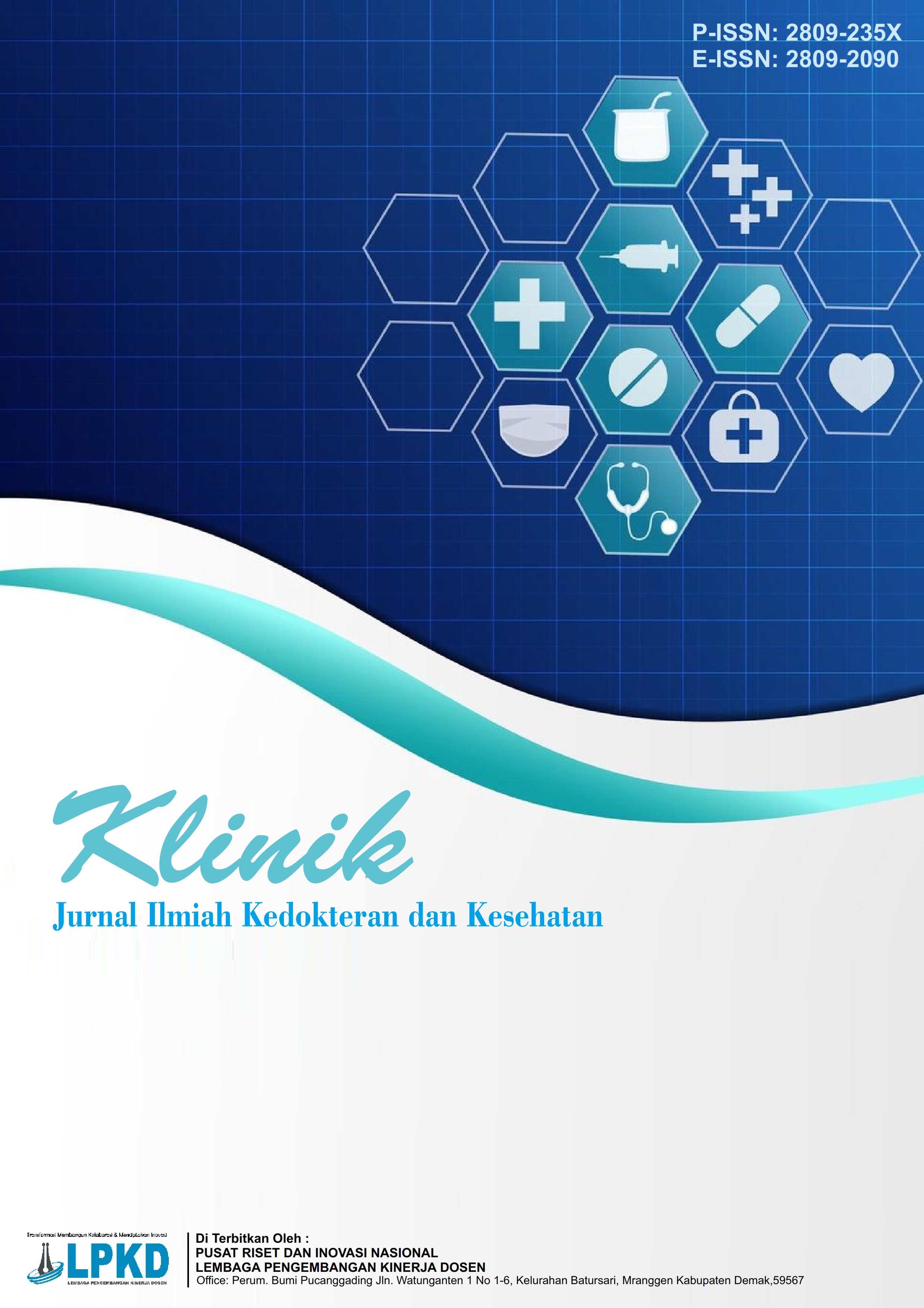Manajemen ICU pada Pasien dengan HIV-AIDS
DOI:
https://doi.org/10.55606/klinik.v5i1.5706Keywords:
HIV/AIDS, ICU, Immune System, Immunodeficiency, Opportunistic InfectionAbstract
Patients with immune system disorders, whether congenital or acquired, represent a high-risk group for severe infections, particularly when admitted to the Intensive Care Unit (ICU). Immune disorders can occur as primary immunodeficiencies, such as IgA Deficiency and DiGeorge Syndrome, or as secondary immunodeficiencies caused by chronic infections like HIV/AIDS or the use of immunosuppressive therapy in post-transplant patients and those with autoimmune diseases. These conditions reduce the body’s ability to fight pathogens, thereby increasing susceptibility to life-threatening opportunistic infections. Specifically, patients with HIV/AIDS face a high risk of severe infectious complications due to a decrease in CD4 cell count below 250 cells/mm³, which significantly worsens the clinical prognosis. The HIV/AIDS epidemic has become a major global health problem with substantial impacts on morbidity, mortality, and economic burden, particularly as it affects the productive age group. Therefore, understanding the mechanisms of immune dysfunction and developing effective infection prevention strategies in immunodeficient patients are essential to improving ICU care outcomes and reducing mortality rates.
References
Bersten, A. D., & Handy, J. M. (2018). HIV and the acquired immunodeficiency syndrome. In Oh's intensive care manual (8th ed.). Elsevier.
Cade, J. F. (2002). Acquired immunodeficiency syndrome. In Uncommon problems in intensive care. GMM.
Fauci, A. S., & Lane, H. C. (2022). Harrison's Principles of Internal Medicine: HIV infection and AIDS. In Harrison's principles of internal medicine (21st ed.). McGraw Hill.
Gingo, M. R., & Morris, A. (2020). Pulmonary complications of HIV infection in the era of antiretroviral therapy. Chest, 157(5), 1337–1348. https://doi.org/10.1016/j.chest.2019.11.050
Irwin, R. S., Lilly, C. M., & Rippe, J. M. (2013). Intensive care of patients with HIV infection. In Irwin manual of intensive care medicine (7th ed.). Wolters Kluwer.
Irwin, R. S., Lilly, C. M., Boyle, W. A., & Kelly, W. F. (2023). Intensive care of patients with HIV infection. In Irwin & Rippe intensive care medicine (9th ed.). Wolters Kluwer.
Leach, R. (2023). The immune compromised patient. In Critical care medicine at a glance (4th ed.). Wiley Blackwell.
Marino, P. (2024). The immunocompromised patient. In The ICU book (5th ed.). Wolters Kluwer.
Phair, J. P., & Palella, F. J. (2018). Changing clinical spectrum of HIV disease in the HAART era. The Lancet Infectious Diseases, 18(3), 203–213.
Pierson, D. J., & Fairman, N. (2019). Respiratory failure in HIV/AIDS patients in the ICU. Chest Critical Care Review, 155(3), 701–712.
Schmidt, G., & Hall, J. B. (2007). AIDS in the ICU. In Just the facts in critical care. McGraw Hill/Medical.
Thompson, M. A., Horberg, M. A., Agwu, A. L., Colasanti, J. A., Jain, M. K., Short, W. R., Singh, T., & Aberg, J. A. (2020). Primary care guidelines for the management of persons infected with human immunodeficiency virus: Update by the HIV Medicine Association of the Infectious Diseases Society of America. Clinical Infectious Diseases, 72(7), e1–e64. https://doi.org/10.1093/cid/ciaa1391
Van Saene, H. K. F., Silvestri, L., & de la Cal, M. A. (2012). AIDS patients in the intensive care unit. In Infection control in the intensive care unit (3rd ed.). Springer. https://doi.org/10.1007/978-88-470-1601-9
Varon, J., & Acosta, P. (2010). Infections in patients with AIDS. In Handbook of critical & intensive care medicine (2nd ed.). Springer. https://doi.org/10.1007/978-0-387-92851-7
World Health Organization. (2021). Consolidated guidelines on HIV prevention, testing, treatment, service delivery and monitoring: Recommendations for a public health approach. WHO Press.
Downloads
Published
How to Cite
Issue
Section
License
Copyright (c) 2025 Jurnal Ilmiah Kedokteran dan Kesehatan

This work is licensed under a Creative Commons Attribution-ShareAlike 4.0 International License.








